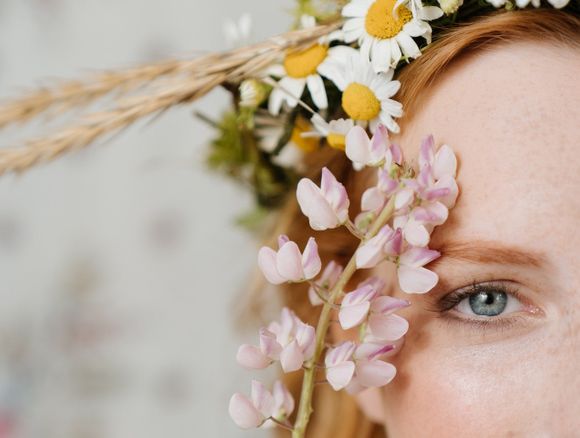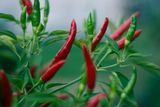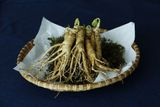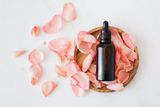Adaptation of the text: Rositsa Tashkova, Master of Molecular Biology and Microbiology
The Russian state occupies vast territories with diverse climatic conditions and includes many peoples and their culture. This makes especially interesting the study of their folk medicine.
Medicinal plants have been used in the lands that make up modern Russia since ancient times. A study of numerous written sources shows that herbal treatments were applied by the Scythians living in the northern territories along the Black Sea coast between the Dniester and Don rivers (from the 7th century BC to the 1st century AD).
The collection and use of medicinal plants in Russia became especially widespread during the reign of Peter I (1672-1725), who personally grew medicinal herbs in his private garden.
This article is devoted to the most common herbal recipes from Russian folk medicine for the treatment of various dermatological diseases. Medicinal plants are well known and available in our country. The information is taken from the article "Russian traditional medicine in dermatology", published in 2018 in the journal Clinics in Dermatology. [ref.1]
The authors Prof. Dr. Olisova, Prof. Dr. Snarskaya, Prof. Dr. Gladko and Prof. Dr. Burova are dermatologists with long-standing practice in Moscow and London.
In the first part of the article, you learned what are the recipes that Russian folk medicine uses to treat vitiligo, infections and warts, and in the second - for acne, dermatitis and rosacea. Here you will find recipes for dealing with hyperpigmentation, wrinkles, psoriasis, hyperhidrosis.

Herbal Recipes For Dealing With Hyperpigmentation
There are many causes of hyperpigmentation. It can be focal or diffuse and in most cases is due to increased melanin production. Diffuse pigmentation indicates systemic disease, for example, Addison's disease and hemochromatosis.
Hyperpigmentation may have a paraneoplastic character. After inflammation, hyperpigmentation is the most common cause of focal pigmentation, while melasma and ochronosis have a more complex etiology.
Folk medicine does not distinguish between types of hyperpigmentation and should therefore be used with caution.
Russian folk medicine uses the whitening properties of lemon, grapefruit, sauerkraut, radish, parsley, cucumber, egg white, oatmeal, dandelion juice and milkweed (asclepias). It also uses dairy products such as kefir, whey and fermented milk to make lotions to treat pigmented skin.
Cucumber (Cucumis sativus) belongs to the genus Cucumis of the Cucurbitaceae family. Studies show high antioxidant activity, analgesic and anti-inflammatory action (thanks to flavonol fizetin).
Cucumber has been used to relieve headaches, seeds - such as diuretic, juice - applied topically against acne and hyperpigmentation.
It contains vitamins B and C, honey, potassium, manganese, proteolytic enzymes, rutin, oxidase, succinic and maleic dehydrogenases, etc. Alpha- and Beta-amirin, sytosterols and hellebozids are found in seeds, and hellebobids B and C and ferredoxin in the leaves.
The effectiveness of cucumber preparations in the treatment of hyperpigmentation is also due to the proposed inhibitory tyrosine activity of the plant.
Lemon is used as a means of treating hyperpigmentation due to its high concentration of vitamin C, as well as as peeling of the skin. Other fruits high in vitamin C include tomatoes, red peppers, potatoes, blackcurrants and citrus fruits.
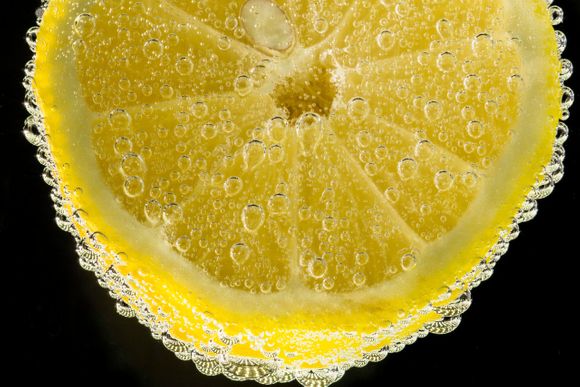
Recipe 1: Lemon solution for skin whitening
Preparation: Dilute the freshly squeezed lemon juice with water in a ratio of 1:10.
Method of administration: Apply the solution several times a day to the affected skin.
Recipe 2: Mask with starch and lemon juice against dark spots on the skin
Preparation: Mask made of starch and lemon juice for sun lentigo - depending on the number of stains, half or a tablespoon of potato starch is dissolved in freshly squeezed lemon juice until a dense mass forms.
Method of administration: Apply to the pigmentation areas and leave for 20-25 minutes. Note that lemon juice can irritate the skin.
Recipe 3: Cucumber peel for skin depigmentation
Method of application: The skin can be bleached and toned using cucumber juice or by rubbing fresh cucumber slices on the affected areas.
Fresh cucumber slices can also be applied to closed eyelids to reduce puffiness.
Recipe 4: Cucumber peel infusion
Preparation: Peel the cucumber. Place 3 tablespoons of finely chopped peel in a container, pour 1 cup of 40% vodka or 40% medical alcohol, close the container tightly and leave until the contents turn greenish.
Method of administration: Apply the infusion to the pigmented areas.
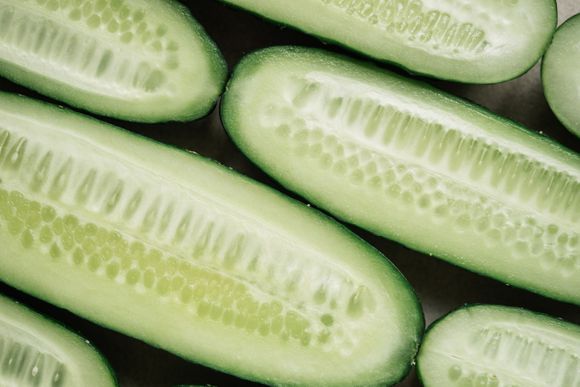
Recipe 5: Blackcurrant mask
Preparation: A mask of blackcurrant is prepared from a tablespoon of unripe fruits and a tablespoon of honey.
Method of administration: The mask should be carefully rubbed on the face and left for half an hour. It is then removed and the face is rinsed with a 1:10 solution of lemon juice and water.
Recipe 6: Potato mask
Preparation: A mask of grated raw potatoes is prepared with the addition of a few drops of vegetable oil, a tablespoon of milk and almond bran.
Method of administration: The mask is applied to the pigmented skin for 20 minutes.
Recipe 7: Mask with honey and fish oil
Honey mask, which includes fish oil, is suitable for the skin at any age.
Preparation: All components must be mixed in equal proportions.
Method of administration: The mask should be applied for 15 minutes.
Recipe 8: Onion juice
Onion juice for the treatment of freckles and lentigo (spots from the sun).
Method of application: Wipe the face with fresh onion juice. To reduce possible irritation, the skin is smeared with a thin layer of sour cream, which is then removed with warm water. This method can be used in dry and normal skin.
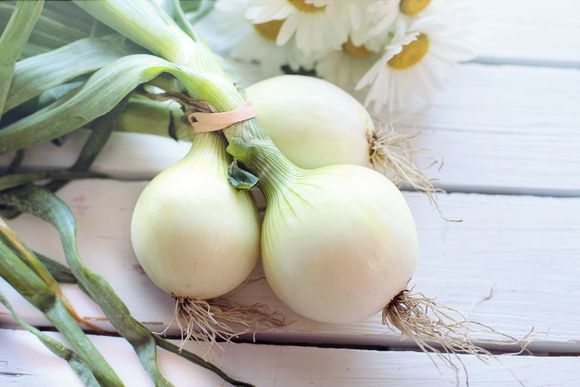
Recipe 9: Oatmeal soap
Preparation: Grind the oatmeal and tuck into a piece of wet gauze.
Method of application: This soap is used for washing without removing the oat flakes from the gauze - instead of another type of soap or shower gel. If necessary, moisturizer can be applied after washing.
Recipe 10: Mask with white clay and lemon juice
Preparation: Add clay powder to freshly squeezed lemon juice to the consistency of the paste.
Method of administration: Apply only to affected areas for about 20 minutes.
Recipe 11: Mask with white clay with different juices
Preparation: Dilute the white clay powder with cucumber juice, juice of pressed parsley leaves, ofica juice, blackcurrant juice or sauerkraut juice.
Method of administration: Apply the paste for 20 minutes.
Recipe 12: Calendula juice
Method of application: Fresh flower juice or calendula leaves can be used for application on pigmented skin areas several times a day.

Recipe 13: Ice cubes from the fruits of guelder rose
Preparation: Viburnum opulus fresh fruit juice is frozen in small forms.
Method of administration: The skin is rubbed vigorously and massaged with ice cubes at least twice a day.
Other folk remedies for the treatment of pigmentation include grapefruit, pomegranate, birch juice, blackcurrant juice and ofica, as well as juice squeezed from fresh parsley and dandelion leaves. Pigmented areas are smeared with one of the above freshly squeezed juices several times a day.
Recipe 14: Fermented dairy products
Method of administration: Fermented dairy products such as kefir and yogurt are recommended for smearing on unwanted pigmentation 2-3 times a day.
Recipe 15: Elderflower infusion
Preparation: Pour 1 cup of boiling water over about 5-6 dried black elder flower buds, cover tightly and leave until completely cool. Strain and dilute the resulting infusion with about half a glass of clean water.
Method of application: Soak a piece of wool in the reconstituted solution and apply to the pigmented areas. As soon as the wool begins to dry, it should be moistened again and the process repeated 3-4 times each day.
Recipe 16: Cabbage juice mask
It is believed that the mask of cabbage juice is an effective means of removing freckles, sunny strips and fine wrinkles.
Method of administration: Apply to the skin using a piece of cotton for 10-15 minutes and rinse with cold water. It is recommended to do this 2-3 times a week.
Herbal anti-wrinkle recipes
Recipe 1: Potato mask
Potato mask for sensitive skin prone to irritations, with puffiness of the face and wrinkles.
Preparation: Peel the raw potatoes, finely grate them and place the resulting paste between two layers of gauze.
Method of application: Apply gauze with the paste to the face for 15-20 minutes and rinse with warm water. The mask smoothes, softens, moisturizes and tones the skin. For acne treatment - keep the mask on for 1-2 hours.

Recipe 2: Mask with potatoes and cucumbers
Mask with potatoes and cucumbers to remove wrinkles.
Preparation: Grate fresh potatoes and cucumbers on a fine grater and mix them.
Method of application: Apply the mixture to the face and neck for 20 minutes. Rinse with water containing a few drops of lemon juice. Dry the skin and massage gently with olive oil.
Recipe 3: St. John's Wort cleansing tonic
St. John's wort tonic for evening cleansing of wilted skin.
Preparation: Add 10 ml of 70% medical alcohol to 100 ml of St. John's wort. Then add 1 tablespoon of tonic to a glass of boiling water and then cool the mixture.
Method of administration: The tonic should be used to cleanse the skin.
Recipe 4: Mask of boiled potatoes
Potato mask for oily and ageing skin.
Preparation: Boil and smash potatoes and then apply them as a mask on the skin.
Recipe 5: Nettle leaf mask
Nettle mask for dry and ageing skin.
Preparation: Grind fresh nettle leaves and crush them together with the same proportion of honey.
Method of application: Apply as a mask to the face.
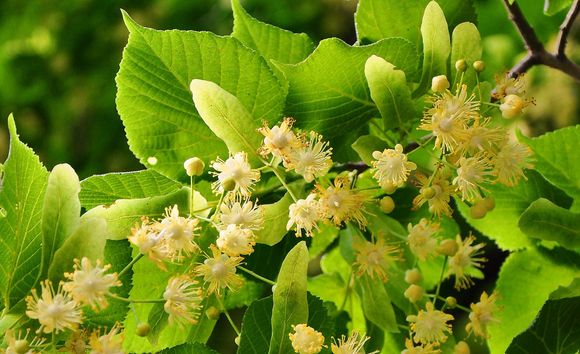
Recipe 6: Lime flowers infusion to cleanse skin
Cleansing infusion for acne, wrinkles and oily skin.
Preparation: Place 1 tablespoon of dry lime flowers (linden) in a glass of boiling water, leave to cool and strain.
Method of administration: Wipe the face with the infusion. The procedure softens and cleanses the skin and relieves irritation. Especially useful after intense sweating and stay in a dusty environment.
Recipe 7: Mask with grape juice and raw milk against wrinkles
Preparation: Mix a quarter cup of grape juice with the same amount of raw milk.
Method of application: Moisten a piece of cotton with the mixture and apply to the face, covering with a towel. Remove after 15-20 minutes, dry the skin carefully and apply cream.
Recipe 8: Mask with grape juice and eggs
Mask of grape juice and eggs for the treatment of oily skin and wrinkles.
Preparation: Add 2 teaspoons of grape paste to the beaten egg whites.
Method of application: Smear the face with grape juice, then apply the mask.
Wash off the mask with cold water 15-20 minutes later.
Herbal recipes against psoriasis
Psoriasis is a multifactorial immune-mediated inflammatory systemic disorder, and the skin is one of the most affected organs. In Russian traditional dermatology are recognized three main stages of psoriasis:
- progressive stage, with the appearance of new skin lesions and possibly an increase in the size of existing ones;
- stable stage, when no new lesions appear and existing ones do not increase in size;
- regression stage, when the lesions begin to disappear.
In the past, dermatologists would have recommended avoiding potential irritants or powerful topical products, such as steroids, during the progressive stage. Instead, the following herbal infusions and topical treatments were administered.
Read more in the article .
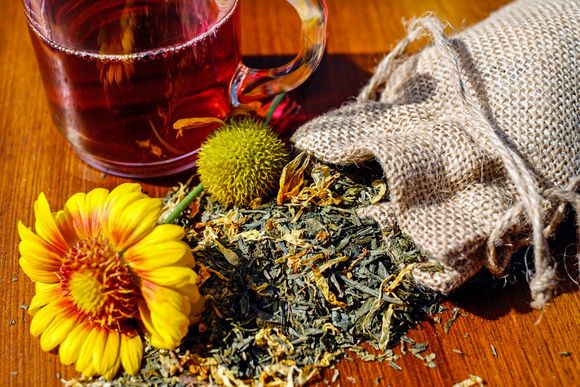
Recipe 1: Infusion against psoriasis - first type
Preparation and ingredients:
- Valeriana officinalis (Valerian) - root, 1 part
- Althaea officinalis (marshmallow) - root, 1 part
- Bidens tripartita (three-lobe beggartick) - stem and leaves, 3 parts
- Hypericum perforatum (St. John's wort) - stem and leaves, 1 part
- Chelidonium majus (greater celandine) - stem and leaf, 1 part
Pour 1 cup of boiling water over the herbal mixture. Leave to steam and cool in a well-closed container and then strain.
Method of administration: Half a glass of the mixture is drunk 2 times a day after meals.
Recipe 2: Infusion against psoriasis - second type
Preparation and ingredients:
- Chelidonium majus (greater celandine) - stem and leaves, 1/2 tablespoon
- Viola tricolor (wild pansy) - stem and leaves, 1/2 tablespoon
Pour the mixture with 1 cup of boiling water and steam for 1 hour in a well-closed porcelain or ceramic container, then strain.
Method of administration: Drink 1/2 cup, 1 hour after meals.
It is also recommended to take a bath with an infusion of greater celandine every day or every other day: pour 4 liters of cold water on 100 grams of the herb, boil the mixture, leave to steam for an hour, strain and add to the bath (20-30 liters) at 40-45°C (not higher than 38-40°C for children).
Treatment of psoriasis on the scalp
Recipe 3: Infusion
Preparation and ingredients:
- Bidens tripartita (three-lobe beggartick) - stem and leaves, 4 parts
- Hypericum perforatum (St. John's wort) - stem and leaves, 2 parts
- Equisetum arvense (field horseradish) - stem and leaves, 1 part
Pour 2 tablespoons of the mixed herbs with 1 cup of boiling water, steam for an hour and strain.
Method of administration: Rub the infusion into the scalp every 2-3 days after washing the hair.
Stable stage of psoriasis
The same herbs can also be used during the stable stage of psoriasis.
Fresh stems and leaves of greater celandine have a mild analgesic, antimicrobial and sedative effect. The herb is one of the main means of combating psoriasis. It is used on its own in the form of infusions, decoctions and tinctures, as well as in combination with other herbs. The plant is used for numerous skin diseases. Latex from fresh stems - the liquid of yellow to orange color, is effective in the treatment of viral warts.
Due to the presence of indol alkaloids, valerian and St. John's wort act as antidepressants.
Wild pansy is well known for its anti-inflammatory properties. For centuries it has been used to treat itching, ulcers, dermatitis and psoriasis.
Althaea officinalisis widely used to treat wounds as an anti-inflammatory agent and in immunocompromised patients. A recent study found that the root of the healing blush containsskin-protecting polysaccharides.
Mustard paper is an old and well-known treatment for dense psoriatic plates. Mustard paper is a sheet of thick paper, Traditionally, the seeds of brown mustard (Brassica junco) are traditionally used. The mustard paper is immersed in hot water (40-45 °C) for a few seconds and applied to a psoriatic plaque and covered with a blanket. Remove after 5-10 minutes. The skin is washed with warm water and moisturized with emollient, olive or sunflower oil.
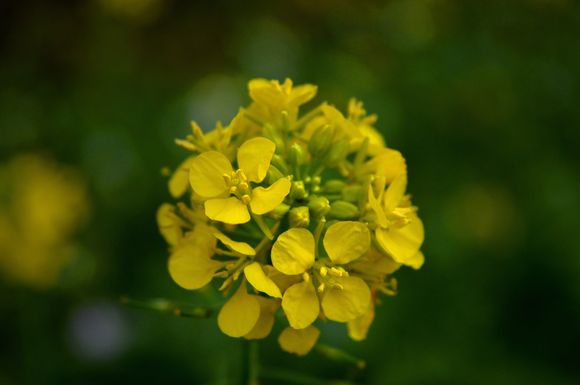
Recipe 4: Mustard paper
Preparation of mustard paper at home: 1 tablespoon of dry mustard powder is mixed with 1 tablespoon of potato starch or flour and diluted with warm water to the density of sour cream. After 30 minutes a thin layer of the mixture (0.5 cm) is applied to a double layer of gauze, a thin cloth or thick paper (not a newspaper!).
Homemade mustard is always stronger than commercially available and should not be applied for more than 5-7 minutes.
Mustard powder and mustard paper (homemade or purchased) should be stored in a dry place, because moisture ingested by mustard reduces its efficacy.
Herbal recipes against hyperhidrosis
Recipe 1: Oak bark powder
How to apply: Powder your feet with finely ground oak bark and put on socks for the night. Wash your feet in the morning with lukewarm water.
Recipe 2: Oak bark stew
Preparation: A stack of oak bark is prepared by placing 20 grams of powdered oak bark in an enameled saucepan and adding a glass of water at room temperature. The mixture should be slowly boiled in a saucepan covered with a lid for half an hour. The mixture should be strained immediately and the rest of the bark squeezed into the infusion.
The infusion should be diluted with boiling water until it reaches its previous volume (cup).
Method of administration: The infusion should be rubbed once a day in the legs or hands and allowed to dry by itself.
With this, we conclude the series of articles dedicated to the application of Russian folk medicine in the treatment of a variety of skin diseases.
